- Jazz Improvisation and creativity: What and how our society and organisations can learn.
- The Nature of Improvisation
- Learning to Improvise: Preparing To BeSpontaneous
- Seven Characteristics of JazzImprovisation
- Provocative Competence: Interrupting Habit Patterns
- Embracing Errors As Source of Learning
- Minimal Structures That Allow Maximum Flexibility
- Distributed Task: Continual Negotiation TowardDynamic Synchronization
- Reliance on Retrospective Sense Making as Form
- Hanging Out: Membership in Communities of Practice
- Alternating Between Soloing and Supporting
- Implications for Non-jazz Contexts
- 2. Cultivate provocative competence: Create expansive promises and incremental disruptions as occasions for stretching out into unfamiliar territory.
- Ensure that everyone has a chance to solo from time to time.
- 4. Cultivate comping behaviors.
- 5. Create organizational designs that produce redundant information
- 6. Create organizational climates that value errors as a source for learning.
- 7. Cultivate serious play: too much control inhibits flow.
- Conclusion and Discussion
Jazz Improvisation and creativity: What and how our society and organisations can learn.
I wake to sleep and take my waking slow. I learn by going where
I have to go.
Theodore Raethke, poet
We must simply act, fully knowing our ignorance of possible
consequences.
Kenneth Arrow, economist
I think the fear of failure is why I try things … if I see that
there’s some value in something and I’m not sure whether I
deserve to attempt it, I want to find out.
Keith Jarrett, jazz pianist
At the dawn of the twenty-first century, we are in the
midst of a revolution that has been called variously the
post-industrial society (Bell 1973), the third wave (Toffler
1980), the information revolution (Naisbitt 1983), and the
post-capitalist society (Drucker 1993).
We do not yet perceive the entire scope of the transformation occurring, but we know that it is global, that it is based on unprecedented
access to information, and that since more people have
access to information than ever before, that it is potentially
a democratic revolution. Perhaps the management
of knowledge development and knowledge creation is becoming
the most important responsibility for managers as
we enter the twenty-first century. Indeed, ideas generated
by various streams and movements, including sociotechnical
design, total quality management, reengineering,
remind us that the fundamental shift we are
experiencing involves empowering people at all levels to
initiate innovative solutions in an effort to improve processes.
Given the unprecedented scope of changes that organizations
face and the need for members at all levels to be able to think, plan, innovate, and process information, new models and metaphors are needed for organizing.

Drucker has suggested that the twenty-first century leader
will be like an orchestra conductor. However, an orchestral
metaphor-connoting pre-scripted musical scores,
single conductor as leader-is limited, given the ambiguity
and high turbulence that many managers experience.
Weick ( 1992) has suggested the jazz band as a prototype
organization. This paper follows Weick’s
suggestion and explores the jazz band and jazz improvising
as an example of an organization designed for maximizing
learning and innovation. To help us understand
the relationship between action and learning, we need a
model of a group of diverse specialists living in a chaotic,
turbulent environment; making fast, irreversible decisions;
highly interdependent on one another to interpret
equivocal information; dedicated to innovation and the
creation of novelty. Jazz players do what managers find
themselves doing: fabricating and inventing novel responses
without a prescripted plan and without certainty
of outcomes; discovering the future that their action creates
as it unfolds.
After discussing the nature of improvisation and the
unique challenges and dangers implicit in the learning
task that jazz improvisers create for themselves, I will
broadly outline seven characteristics that allow jazz bands
to improvise coherently and maximize social innovation
in a coordinated fashion. I also draw on my own experience
as a jazz pianist. I have played with and lead combinations
of duos, trios, and quartets in addition to touring
in 1980 as pianist with the Tommy Dorsey Band under
the direction of trombonist Buddy Morrow. I will explore
the following features of jazz improvisation.
- Provocative competence: Deliberate efforts to interrupt
habit patterns; - Embracing errors as a source of learning;
- Shared orientation toward minimal structures that
allow maximum flexibility; - Distributed task: continual negotiation and dialogue
toward dynamic synchronization; - Reliance on retrospective sense-making;
- “Hanging out”: Membership in a community of practice;
- Taking turns soloing and supporting.
Finally, I will suggest implications for organizational
design and managing for learning.
The Nature of Improvisation
There is a popular misconception that jazz players are
inarticulate, untutored geniuses, that they have no idea
what they are playing as if picking notes out of thin air.
As biographies of jazz players and studies of jazz have
shown, the art of jazz playing is very complex and the
result of a relentless pursuit of learning and disciplined
imagination. Since (until recently) there have been no
conservatories or formal schools of jazz instruction, veteran
jazz players are highly committed to self-renewal,
having had to create their own learning opportunities.
Jazz improvisers are interested in creating new musical
material, surprising themselves and others with spontaneous,
unrehearsed ideas. Jazz differs from classical music
in that there is no clear prescription of what is to be
played. From the Latin “improvisus,” meaning “not seen
ahead of time,” improvisation is “playing extemporaneously
. . . composing on the spur of the moment”
(Schuller 1989, p. 378). Given the highly exploratory and
tentative nature of improvisation, the potential for failure
and incoherency always lurks just around the comer. Saxophonist
Paul Desmond said that the improviser must
“crawl out on a limb, set one line against another and try
to match them, bring them closer together” (Gioia 1988,
p. 92). Jazz saxophonist Steve Lacy discusses the excitement
and danger inherent in improvisation and likens it
to existing on the edge of the unknown.
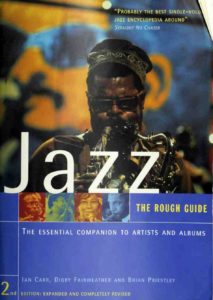
I’m attracted to improvisation because of something I value.
There is a freshness, a certain quality, which can only be obtained
by improvisation, something you cannot possibly get
from writing. It is something to do with the “edge.” Always
being on the brink of the unknown and being prepared for the
leap. And when you go out there you have all your years of
preparation and all your sensibilities and your prepared means
but it is a leap into the unknown. (Bailey 1992, p. 57)
The metaphors of leaping into the unknown, hanging
out on a limb, suggest the exhilarating and perilous nature of engaging in an activity in which the future is largely
unknown, yet one in which one is expected to create
something novel and coherent, often in the presence of
an audience.
Gioia captures a sense of the challenge and difficulty
inherent in jazz by considering what practitioners of other
art forms would subject themselves to if they relied on
improvisation as design.
If improvisation is the essential element in jazz, it may also be
the most problematic. Perhaps the only way of appreciating its
peculiarity is by imagining what twentieth-century art would be
like if other art forms placed an equal emphasis on improvisation.
Imagine T. S. Eliot giving nightly poetry readings at which,
rather than reciting set pieces, he was expected to create impromptu
poems-different ones each night, sometimes recited
at a fast clip; imagine giving Hitchcock or Fellini a handheld
motion picture camera and asking them to film something, anything-
at that very moment, without the benefits of script, crew,
editing, or scoring; imagine Matisse or Dali giving nightly exhibitions
of their skills-exhibitions at which paying audiences
would watch them fill up canvas after canvas with paint, often
with only two or three minutes devoted to each “masterpiece.”
(Gioia 1988, p. 52)
Improvisation involves exploring, continual experimenting,
tinkering with possibilities without knowing
where one’s queries will lead or how action will unfold.
Learning to Improvise: Preparing To Be
Spontaneous
It is worth exploring for a moment the way that jazz musicians
learn to improvise in order to gain a deeper understanding
of how they think while they are playing.
Leaming to play jazz is a matter of learning the theory
and rules that govern musical progressions. Once integrated
these rules become tacit and amenable to complex
variation and transformation, much like learning the rules
of grammar and syntax as one learns to speak. Jazz players
learn to build a vocabulary of phrases and patterns by
imitating, repeating, and memorizing the solos and
phrases of the masters until they become part of their
repertoire of “licks” and “crips.”
According to trumpeter Tommy Turrentine,
The old guys used to call those things crips. That’s from crippled
… In other words, when you’re playing a solo and your
mind is crippled and you can’t think of anything different to
play, you go back into one of your old bags and play one of
your crips. You better have something to play when you can’t
think of nothing new or you’ll feel funny laying out there all
the time (quoted in Berliner, 1994, p. 102).
After years of practicing and absorbing these patterns,
they train their ears to recognize what phrases fit within different forms, the various options available within the
constraints of various chords and songs.
They study other players’ strategic thought process that guided their solo
construction, why they chose certain notes and how their
motifs fit the contour of the overall phrasing.
A transformation occurs in the player’s development
when he or she begins to export materials from different
contexts and vantage points, combining, extending, and
varying the material, adding and changing notes, varying
accents, subtly shifting the contour of a memorized
phrase. Combining elements from different musical models,
mixing different harmonies and grace notes, extending
intervals, and altering chord tones is a metaphorical
transfer of sorts (Barrett and Cooperrider 1990), transferring
from one context into another to produce something
new. By combining, extending, and varying, they breathe
life into these forms. The variation could involve something
as simple as taking automatic phrases and extending
them into new and unfamiliar contexts, such as trying out
a phrase over a different chord. Pianist John Hicks recalls
experiencing a breakthrough when he combined previously
unrelated chords. Saxaphonist Lee Konitz attempts
to create new substitutions as he plays to enrich the basic
harmonic structure of standard songs (Berliner 1994, p.
161).
The aim is to integrate ideas, freeing attention so that
players can think strategically about their choice of notes
and the overall direction of their solos. Hargreaves et al.
(1991, p. 53) hypothesize that when improvisers employ
automatic thinking’ to execute patterns, they are free to
plan the overall strategy of the piece; they are “aware of
playing detailed figures or ‘subroutines’ at a relatively
peripheral or unconscious level, with central conscious
control reserved for overall strategic or artistic planning.”
Saxaphonist James Moody practices “trying to play
something that you like and being able to put it anywhere
you want in a tune” (Berliner 1994, p. 174). Jazz critic Mark Gridley claims that Bill Evans was a master strategist.
Evans crafted his improvisations with exacting deliberation. Often
he would take a phrase, or just a kernel of its character, then
develop and extend its rhythms, its melodic ideas, and accompanying
harmonies. Within the same solo he would often return
to it, transforming it each time. And while all this was happening,
he would be considering ways of resolving the tension that
was building. He would be considering rhythmic ways, melodic
ways, and harmonies, all at the same time, long before the moment
that he decided was best for resolving the idea …. During
Bill Evans’s improvisations, an unheard, continuous self-editing
was going on. He spared the listener his false starts and discarded
ideas …. Evans never improvised solos that merely strung together ideas at the same rate they popped into his head.
The results of these deliberations could be a swinging and exhilarating
experience for the listener, but they reflected less a
carefree abandon, than the well-honed craftsmanship of a very
serious performer working in the manner of a classical composer.
The adjective most frequently applied to his music is
“introspective” (Gridley 1991, pp. 302, 303).
It is uncertain to what degree improvisers go through
an “unheard, continuous self-editing,” an anticipatory,
virtual trial and error as they consider different directions
and interpretations of the material. Within a split second,
musicians must project images and goals gleaned from
some musical model or one they have just heard. Although
Gridley theorizes that Bill Evans is thinking fairly
far ahead and choosing phrases long before he played it,
some musicians seem to be deciding within shorter time
spans which notes to play.

One player describes the subtle interplay between prehearing, responding, and following an idea, who sees the direction of the phrase that is just
ahead of him and likens it to “chasing a piece of paper
that’s being blown into the wind” (Berliner 1994, p. 190).
Others speak of going on automatic pilot while they think
of something, repeating a phrase in order to buy time
while their imagination wakes up. This no doubt, is one
characteristic that distinguishes great soloists: how far
ahead they are thinking and strategizing about possible
phrases, how to shape the contour of their ideas, how and
when to resolve harmonic and rhythmic tension. This
points toward a delicate paradox musicians face, a point
I will explore below: too much reliance on learned patterns
(habitual or automatic thinking) tends to limit the
risk-taking necessary for creative improvisation; on the
other hand too much regulation and control restrict the
interplay of musical ideas.
In order for musicians to “strike a groove,” they must suspend some degree of control and surrender to the flow of the music.
The previous section addressed the nature of improvisation,
the challenging task of playing unrehearsed ideas,
the process of developing improvisatory skills and the
process of learning the jazz idiom. In the following section,
I will outline seven characteristics of jazz improvisation
and explore how these features apply in non-jazz
contexts.
Seven Characteristics of Jazz
Improvisation
Provocative Competence: Interrupting Habit Patterns
Perhaps because of the treachery involved in improvising
and the risk of playing something that is incoherent, there
is often a temptation to do what is feasible, to play notes that are within one’s comfortable range.
This is why, as many jazz critics attest, there is a temptation on the part
of jazz improvisers to rely on “certain stock phrases
which have proven themselves effective in past performance
(rather than) push themselves to create fresh improvisations”
(Gioia 1988, p. 53). Yet, the art of jazz improvisation
demands that the musician create something
different. Musicians and critics agree that “musicians who
‘cheat’ by playing the same or similar solos over and over
again are looked down upon by colleagues and fans”
(Gioia 1988, p. 52). Saxophonist Ronnie Scott contrasts
Oscar Peterson’s flawless pre-rehearsed solos with the
risk taking of Sonny Rollins, who attempts to transform
the harmonic and melodic materials that the tune presents.
Oscar Peterson is a very polished, technically immaculate, performer,
who–1 hope he wouldn’t mind me saying so-trots out
these fantastic things that he has perfected and it really is a
remarkable performance. Whereas Sonny Rollins, he could go
on one night and maybe it’s disappointing, and another night
he’ll just take your breath away by his kind of imagination and
so forth. And it would be different every night with Rollins.
(Quoted in Bailey 1988, p. 51)
Because of the temptation to repeat what they do well
rather than risk failure, veteran jazz musicians make deliberate
attempts to guard against the reliance on prearranged
music, memorized solos, or habits and patterns
that have worked for them in the past. Keith Jarrett decries
those who play overlearned cliches and become imitations
of themselves: “The music is struggle. You have
to want to struggle. And what most leaders are the victim
of is the freedom not to struggle. And then that’s the end
of it. Forget it!” (Carr 1991, p. 53). Jazz musicians often
approach their work with a self-reflexiveness, guarding
against the temptation to rely on ingrained habits, so that
they don’t repeat stock phrases and comfortable solos that
contradict the goal of improvisation. Tony Oaxley recalls
moments of self critique following performances: “The
search was always for something that sounded right to
replace the things that sounded predictable and (therefore)
wrong (Bailey 1992, p. 89). Jarrett put it succinctly:
“I think you have to be completely merciless with yourself’
(Bailey 1992, p. 122).
Organization learning theorists have noticed that organizations
also are tempted to rely on past successes and
repeat stock phrases. Behavior in organizations is based
on routines-rules, recipes, practices, conventions, beliefs-
in short the response system that encodes activity
learned from the past. Ordinary learning in organizations
tends to lead to stable routines (March 1991) that perpetuate
and become fixed even if they are no longer appropriate
or detrimental (Levitt and March 1988), as if they
are playing themselves automatically. Even when stimuli
change, organizations tend to generate the same responses
(Weick 1991). Many routines are automatic and not even
accessible to ordinary recollection and analysis, so that
individuals and organizations continue them long after
actors have ceased to be able to provide an account of
their purposes (Cohen 1991). Levitt and March (1988)
refer to this as the competency trap: the tendency for an
organization to become competent and specialized in a
routine that was successful, thereby squelching experimentation
(March 1991).
Especially under stressful conditions, such as environmental
turbulence, there is a tendency to fall back on
habitual responses. In this sense, managers often face the
same dilemma that jazz players face: their actions are
quite public and therefore stressful; they too are tempted
to repeat what they do well rather than risk failure if they
should depart from what has been proven to work. As
Argyris ( 1990) has pointed out, the pressure to look competent
leads people to defend their actions and reasoning.
This regression becomes an obstacle to the questioning
of assumptions and considering situations from a fresh
perspective that could lead to novel initiatives.
Hedberg writes that organizations and managers can
voluntarily switch from routines to a deliberate search for
alternative possibilities but this is rare: “learning is typically
triggered by problems” (Hedberg 1981, p. 16). Of
course, even deliberate search for alternatives might not
be sufficient for creation of novelty.
This creates a challenge for jazz players: their purpose,
by definition, is to avoid that which is automatic and safe
and formulas that simply repeat past success. Some jazz
musicians avoid “competency traps” and keep fresh alternatives
open by deliberately exploring the limits of
their knowledge and comfort level. Herbie Hancock recalls
an early moment when he discovered the limits of
his knowledge. He remembers being inspired when he
heard someone playing a passage that he (Hancock) could
not play. For some this might be discouraging. But for
Hancock, and most successful jazz musicians, this is the
beginning rather than the end of the story.
I had been a musician all my life, had all this training, played
with all these great players, but I knew I could never have created
that. And if I can’t do it, something is missing-I have to
find out how to do it! I’ve always been like that when I’ve heard
something I liked but I couldn’t do. That’s how I got into jazz.
I heard this guy playing (jazz piano) at a variety show in high
school, and I knew that he knew what was doing, and he was
doing it on my instrument-but I had no idea of what was going
on. So I wanted to learn how to do it. That’s what got me started.
In order to do that, you have to know what you don’t know.
(Novello 1990, p. 445)
What has not been explored much by learning theorists
is managers’ consciously “switching cognitive gears”
from habitual to active thinking (Louis and Sutton 1991).
Hedberg et al. (1976) encourage organizations to nurture
small disruptions and incremental re-orientations to keep
learning processes vital and handicap inferior routines.
Incremental experiments sharpen perception and activate
thought processes.
Many veteran jazz musicians practice provocative
competence; they make deliberate efforts to create disruptions
and incremental re-orientations. This commitment
often leads players to attempt to outwit their learned
habits by putting themselves in unfamiliar musical situations
that demand novel responses. Saxophonist John
Coltrane is well known for deliberately playing songs in
difficult and unfamiliar keys because “it made (him)
think” while he was playing and he could not rely on his
fingers to play the notes automatically. Herbie Hancock
recalls that Miles Davis was very suspicious of musicians
in his quartet playing repetitive patterns so he forbade
them to practice. In an effort to spur the band to approach
familiar tunes from a novel perspective, Davis would
sometimes call tunes in different keys, or call tunes that
the band had not rehearsed. This would be done in concert,
before a live audience. “I pay you to do your practicing
on the band stand,” Hancock recalls Davis telling
them. Keith Jarrett recalls Davis’ commitment to “keeping
the music fresh and moving” by avoiding comfortable
routines. “Do you know why I don’t play ballads any
more?” Jarrett recalled Davis telling him. “Because I like
to play ballads so much” (Carr 1992, p. 53).
Miles Davis not only practiced this provocative competence
in live concerts, he also extended this to the recording
studio. This is illustrated in a famous 1959 session.
When the musicians arrived in the recording studio,
they were presented with sketches of songs that were
written in unconventional modal forms using scales that
were very foreign to western jazz musicians at that time.
One song, contained 10 bars instead of the more familiar
8 or 12 bar forms that characterize most standards. Never
having seen this music before and largely unfamiliar with
the forms, there was no rehearsal. The very first time they
performed this music, the tape recorder was running. The
result was the album Kind of Blue, widely regarded as a
landmark jazz recording. When we listen to this album,
we are witnessing the musicians approaching these pieces
for the first time, themselves discovering new music at
the same time that they were inventing it.
What makes a disruption provocative rather than noxious
can be gleaned from Miles Davis’ example. First, his
interruption was affirmative (Barrett 1995): he held an
image of members as competent performers able to meet
the demands of a challenging task. He believed in their
overall potential and capacity to perform successfully
even if they felt uncomfortable (and possibly irritated).
In fact, his band members were often able to perform at
a higher level. Second, he did more than just disrupt habit
patterns: he created alternative pathways for action. He
imported new material that opened possibilities and suggested
alternative routes for his players. Once the song
begins, passivity is not an option: the activity is impersonally
structured so that musicians are required to play
something, to take some kind of action. Third, the interruption
was incremental. These foreign contexts were
scaled to be challenging, but not overly disruptive. This
suggests the role of leadership in cultivating generative
metaphors and seeding suggestive narratives (Barrett and
Cooperrider 1990).
Hedberg et al. (1976) contend that system designers
have weak direct influence on participants’ behavior.
They suggest that designers reconceive their roles as catalysts
for a system’s self-design by focusing on third order
strategies for carrying out second order learning.
Miles Davis had a talent for creating incremental obstacles
and nurturing small disruptions that provoked his
musicians to experiment with new actions that yielded
new levels of creativity. This suggests that managers, like
Miles Davis, develop a provocative competence that inspires
alternative possibilities, an ability to create anomalies
and unconventional obstacles that make it impossible
for members to rely on habitual responses and rote
thinking.
It would be useful to consider the organizational equivalent
of requiring members to abandon overreliance on
automatic processing and practicing familiar routines.
Clearly this would have implications for dislodging conventional
assumptions regarding such conventional practices
as job descriptions, performance evaluations, and
recruitment. Perhaps this is what W. L. Gore and Associates,
the makers of Gore-tex, have in mind by abandoning
formal job descriptions or conventional chain of command
reporting structures. Reportedly, when a newly
hired MBA reported for work one day, Bill Gore, the
President and founder advised him to “look around and
find something you’d like to do.” Such a loosely structured
environment makes it more difficult to rely on accepted
routines and forces new hires to improvise new
actions. Or consider the example of the R & D executive
at Sony who, wanting to create a mini compact disc
player, was faced with engineers who were convinced the
CD technology could not be compacted further. Based on
familiar routines, and perhaps enamored of the technology
they themselves developed, they could not imagine
a smaller alternative. The executive walked into the meeting
with a 5-inch block of carved wood and told them
that the new CD player needed to be no bigger. The engineers
now had novel constraints to work through, a
challenging puzzle not unlike the modal sketches that
Miles Davis’ band found when they walked into the Kind
of Blue recording session.
This suggests that we expand our definition of leadership
to include creating conditions that encourage members
to bring a mindfulness to their task that allows them
to imagine alternative possibilities heretofore unthinkable.
Consider the example of British Airlines which held
an off-site workshop for its executives to consider ways
to improve customer service for the business class. However,
instead of sleeping in regular hotel rooms, one executive
had the beds removed and replaced them with
airline seats. This no doubt disturbed the taken-forgranted
routines, not to mention sleep patterns. Faced
with the puzzle of these unexpected constraints, they
came up with a number of innovations to improve comfort,
including the design of a more comfortable seat that
included a footrest. Provocative competence involves creating
irregular arrangements that disturb “stock phrases”
and comfortable playing, encouraging members to improvise
new solutions.
Embracing Errors As Source of Learning
If past successes create routines that drive out experimentation
in organizations, there is a tendency to construe
errors as unacceptable. However, errors are a very important
source of learning. Abdel-Hamid and Madnick
( 1990) discuss the need to learn from failures in the development
of new software. The Seifert and Hutchins
(1992) study of decision making on a Navy ship demonstrated
the learning potential of error-making, how errors
serve as an opportunity for receiving feedback and
becoming familiar with the wider task environment. As
individuals learned through error correction procedures,
they came closer to the eventual goal of error-free performance.
Jazz bands also embrace errors as source of
learning, but for quite different reasons. These studies
suggest the value of learning from errors as a way to
eliminate them under the assumption that in actual performance,
errors are ultimately intolerable. Jazz bands,
on the other hand, see errors as inevitable and something
to be assimilated and incorporated into the performance.
Since jazz improvisation is a highly expressive art form
that leads players to go out “on the edge of the unknown”,
it is impossible to predict where the music is going to
lead. Risky, explorative attempts are likely to produce
errors. In fact, jazz improvisers regularly make mistakes,
often without the audience’s awareness. Often, there are discrepancies between intention and action: sometimes
the hands fail to play what the inner ear imagines. Sometimes
musicians misinterpret others’ cues or simply play
the wrong notes.
Somebody who decides to play jazz for a living knows he will
struggle for the rest of his life, unless he opts for predictable
and smoothing compromise. Honest jazz involves public exploration.
It takes guts to make mistakes in public, and mistakes
are inherent. If there are no mistakes it’s a mistake. In Keith
Jarrett’s solo improvisations you can hear him hesitate, turn in
circles for a while, struggle to find the next idea. Bird used to
start a phrase two or three times before figuring out how to
continue it. On the spot. Now. No second draft. It can take a
toll night after night in front of an audience that just might be
considering you shallow. (Zwerin 1983, p. 33)
Jazz players are often able to turn these unexpected
problems into musical opportunities. Errors become accommodated
as part of the musical landscape, seeds for
activating and arousing the imagination. Drummer Max
Roach sees the value in errors, “if two players make a
mistake and end up in the wrong place at the wrong time,
they may be able to break out of it and get into something
else they might not have discovered otherwise.” (Berliner
1994, p. 383). Herbie Hancock recalls playing an obviously
wrong chord during a concert performance. Hearing
the unexpected combination of notes, Miles Davis used
them as a prompt, and rather than ignore the mistakes,
played with the notes, embellishing them, using them as
a creative departure for a different melody. Any event or
sound, including an error, becomes a possible springboard
to prime the musical imagination, an opportunity
to re-define the context so that what might have appeared
an error becomes integrated into a new pattern of activity.
Looking backward, the “wrong” notes appear intentional.
Rather than treat an enactment as a mistake to be
avoided, often what jazz musicians do is to repeat it, amplify
it, develop it further until it becomes a new pattern.
Pianist Don Friedman recalls listening to a recording with
himself on piano and Booker Little on trumpet. When
listening to the recording 20 years later, Friedman discovered
that he played a major third in the chord instead
of a minor third and Little brilliantly accommodated it,
allowing the “wrong note” to shape his solo.
Little apparently realized the discrepancy during his solo’s initial
chorus, when he arrived at this segment and selected the
minor third of the chord for one of the opening pitches of a
phrase. Hearing it clash with the pianist’s part, Little improvised
a rapid save by leaping to another pitch and resting, stopping
the progress of his performance. To disguise the error further,
he repeated the entire phrase fragment as if he had initially intended
it as a motive, before extending it into a graceful, ascending
melodic arch. From that point on, Little guided his solo according to a revised map of the ballad. “Even when Brooker
played the melody at the end of the take,” observed Friedman
with admiration, he varied it in ways “that fit the chord I was
playing.” (Berliner 1994, p. 383)
Repeating the phrase with the clashing note, Little
made it sound intentional. When errors do happen, rather
than search for causes and identify responsibility, musicians
treat them impersonally: they make adjustments and
continue. In this vein, Weick (1990) cites critic Ted Gioia
who calls for a different standard for evaluating performance,
an “aesthetic of imperfection”. Rather than evaluate
the success or failure of individual creations based
on some external standard of perfection (such as one
might find in the evaluation of a classical musical performance),
Gioia calls for the need to evaluate courageous
efforts. Such an aesthetic would involve evaluating
the entire repertoire of actions that the musician attempted,
the beautiful phrases combined with the clunkers
that were the result of risky efforts, the same expansive
efforts that no doubt produce beautiful passages.
One implication for enhancing innovative action in organizations
is to question the way we look at errors and
breakdowns. How can people in organizations be expected
to attempt something that may be outside of their
reach if breakdowns are seen as unacceptable? This
would suggest that innovation would be enhanced if organizations
resisted the attempts to over-focus on the
elimination of error or to see mistakes as character blemishes.
Too often managers create monuments to organizational
breakdowns through exhaustive search for causes
and framing mistakes as unacceptable. This often has the
unintended consequence of immobilizing people. Given
the nature of knowledge work in the organizations of the
future, this suggests that perhaps organizations need to
adopt an “aesthetic of imperfection,” an acknowledgement
that learning is something that often happens by trial
and error, by brave efforts to experiment outside of the
margin.
This would propose a different standard for organizational
evaluation: evaluate performances not just
on conventional standards of success, but on strength of
effort; level of purposeful, committed engagement in an
activity; perseverance after an error has been made; passionate
attempt to expand the horizon of what had been
considered possible. At the very least, it suggests distinguishing
between errors that are the result of carelessness
and those that are the result of caring deeply about a project.
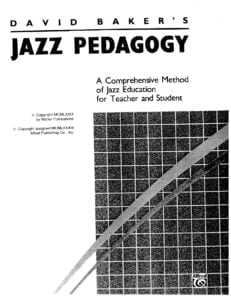
Similarly, once errors are made, how do managers tum
these unexpected events into learning opportunities, as
imaginative triggers and prompts for new action? Consider
an example from Nordstrom’s department store
where employees are encouraged to “respond to unreasonable
customer requests.” Stories circulate about an
employee paying a customer’s parking ticket when the
store’s gift wrapping took too long. Such capacity for
accommodation and adjustment might be indispensable
when attempts at innovation and customer satisfaction do
not immediately meet expectation. Rather than simply rewarding
managers for “fixing” problems, perhaps organizations
should consider the way that managers persevere
and make use of mistakes as points of creative
departure. An aesthetic of imperfection implies that errors
would be framed not so much as character blemishes, but
as unavoidable mishaps to be creatively re-integrated as
negotiation proceeds.
This also suggests that if organizations advocate ad hoc
action and serendipitous learning, then there are times
when members must be willing to release one another for
consequences that they could not predict, for errors of
trespassing and over-extension. Hannah Arendt (1958)
noted that the one antidote to the predicament of unpredictability
is forgiveness. Imagine executives developing
an aesthetic of forgiveness, releasing those who make noble
efforts, for consequences that could not be foreseen.
Otherwise, tightly bound bureaucracies might be necessary
to ward off trespassers.
Minimal Structures That Allow Maximum Flexibility
In an effort to guarantee consistency and efficiency, organizations
often attempt to systematically avoid changes
and ambiguity through creating standard operating procedures,
clear and rationalized goals, and forms of centralized
control. Hedberg et al. ( 1976) suggested that organizational
processes would be improved if designers
create minimal structures that allow diversity and minimize
consensus. Similarly, Eisenberg (1990) analyzes
jamming in jazz bands and contends that creativity is enhanced
when emphasis is placed on coordinating action
with minimal consensus, minimal disclosure, and minimal,
simple structures. Modest structures value ambiguity
of meaning over clarity, preserve indeterminancy and paradox
over excessive disclosure. By “making do with minimal
commonalities and elaborating simple structures in
complex ways,” (Eisenberg 1990) players balance autonomy
and interdependence.
Jazz improvisation is a loosely structured activity in
which action is coordinated around songs. Songs are
made up of patterns of melodies and chord changes,
marked by sections and phrases. Following Bastien and
Hostager ( 1988) songs are “cognitively held rules for musical
innovation” (p. 585). When musicians improvise, it
is usually based on the repetition of the song structure.
These guiding structures are nonnegotiable, impersonal
limitations: musicians do not have to stop to create agreements
along the way. The selection of standard tunes and
their chord changes embody minimal tacit rules that are
rarely articulated. The musicians know the chord changes
to “All of Me” or a 12 bar blues, so that often musicians
who have never met are able to ‘jam” and coordinate
action. These moderate constraints serve as benchmarks
that occur regularly and predictably throughout the tune,
signalling the shifting context to everyone. Everyone
knows where everyone else is supposed to be, what
chords and scales players are obliged to play. These minimal
constraints allow them freedom to express considerable
diversity. Players are free to transform materials,
to intervene in the flow of musical events and alter direction.
Once there is a mutual orientation around the basic
root movement of the chord patterns, even the basic
chords themselves can be altered, augmented or substituted.
Songs impose order and create a continuous sense of
cohesion and coordination: all the players know where
everyone is at any given moment. Individual players are
able to innovate and elaborate on ideas with the assurance
that they are oriented to a common place. How can organizations
achieve fluid coordination without sacrificing
creativity and individual contributions? What would be
the equivalent in organizations, of structures that are minimal,
non-negotiable, impersonal tacitly accepted rules
that do not need to be constantly articulated. Weick
(1990) suggests that one organizational equivalent of
minimal structure might be credos, stories, myths, visions,
slogans, mission statements, trademarks. Organizational
slogans, such as A vis’ “we try harder” are catchy
phrases awaiting embellishment, encouraging individual
members to elaborate on their version of the melodic path
that fits within the tacit constraints. Organizational stories
and myths, such as the Nordstrom’s employee who paid
a waiting customer’s parking ticket, persist as markers to
remind and seed other employees to embellish on the melody,
initiating unusual actions to satisfy customers.
One counterpart to minimal models in organizations is
the design prototype. The prototype is the design pattern
upon which engineers model and create variations on basic
structures. For example Crick and Watson, credited
for discovering the structure of DNA, recall that when
they were exploring the molecule, they frequently built
and re-built prototypes and copper models even though
they knew the models were not completely accurate. The
DNA prototypes acted as a minimal structure that provided
imaginative boundaries around which they could
explore options, a shared orientation that invited them to
elaborate upon their ongoing creation. Under traditional norms of organizational design, prototypes are often the
exclusive property of design engineers, kept separate
from manufacturing, marketing, and other groups, not to
mention the customer. As a result, many brilliant designs
never get produced, or worse, different engineering
groups work on their parts separately, only to discover in
the final stages that their contributions, however brilliant
and innovative, do not fit together. Often technical disciplines
are segmented as knowledge specialists develop
ideas at different rates, produce solutions that work well
in lab settings, but are difficult to reproduce (Purser and
Pasmore 1992).
As Weick (1990) pointed out, organizations pay disproportionate
attention to beginnings and endings, but not
much attention to ongoing temporal coordination. Many
breakdowns in innovation occur because organizations
are too segmented. Often members do not share a mutual
orientation after a project is launched, so that when someone
alters action or changes direction, no one is sure
where others are located, and do not find out until it is
too late. As a result they either feel too constrained to
take creative action, or when they do, they discover too
late that it causes problems for others.
But what would be the organizational equivalent of
song, a structure in which options are minimally-limited,
publicly shared, impersonal, simultaneous, and temporally
punctuated? Perhaps one counterpart to a song
would be rapid prototyping, regular updating and changing
of design prototypes. Such a practice would allow
cross-discipline communication so that people can create
while knowing how and where their ideas fit into the
whole evolving system. Consider an alternative that Kodak
initiated when they were developing the Funsaver
camera. Rather than working separately, the engineering,
manufacturing and marketing departments created a
shared work space and collaborated to develop a prototype
for the camera. Designers made changes and creative
contributions to their individual parts, but would update
the schematic for the whole camera. Each morning these
individual changes were made public and accessible so
everyone saw the results of their joint efforts on an ongoing
basis and each knew where everyone else was
through each stage of the design. Using computer technology
to make these contributions public on a regular
basis allows everyone to attune themselves to possible
direction, like changing the root movement of the chord.
People add variants, like the drummer adding accents,
that might inspire creative departures. Rapid prototypes
function like the loose framework of the song: they leave
a great deal of room to depart and deviate; and yet there
is enough structure there to give players enough collective
confidence to play together. The temporal updating of the minimal structure notifies everyone where others
are in their incremental innovations, like the chord
changes of a song, and increases the likelihood that people
can achieve a successful joint awareness throughout
the life of the project.
Distributed Task: Continual Negotiation Toward
Dynamic Synchronization
Although there are many players well known for their
soloing, in the final analysis, jazz is an ongoing social
accomplishment. What characterizes successful jazz improvisation,
perhaps more than any factor mentioned
thusfar, is the ongoing give and take between members.
Players are in a continual dialogue and exchange with one
another. Improvisers enter a flow of ongoing invention, a
combination of accents, cymbal crashes, changing harmonic
patterns, that inter-weave throughout the structure
of the song. They are engaged with continual streams of
activity: interpreting others’ playing, anticipating based
on harmonic patterns and rhythmic conventions, while
simultaneously attempting to shape their own creations
and relate them to what they have heard.
Jazz improvisation is an emergent, elusive, vital process.
At any moment a player can take the music in a new
direction, defy expectations, trigger others to re-interpret
what they have just heard. Trumpeter Wynton Marsalis,
in terms reminiscent of John Dewey’s dictum that genuine
learning is by nature a participative, democratic experience,
compares improvisation to working out ideas in
democratic groups.
Groups of people can get together and the process of their negotiation
can have an integrity, and the fact that they can get
together and have a dialogue and work-it’s like what the UN
does. They sit down, and they try to work things out. It’s like
any governing body. It’s like a wagon train, you know.
(Marsalis and Stewart 1995)
Pianist Tommy Flanagan discusses his duo albums with
Hank Jones and Kenny Barron
You don’t know what the other player is going to play, but on
listening to the playback, you hear that you related your part
very quickly to what the other player played just before you.
It’s like a message that you relay back and forth …. You want
to achieve that kind of communication when you play. When
you do, your playing seems to be making sense. It’s like a conversation.
(Tommy Flanagan quoted in Berliner 1994, p. 369)
In order for jazz to work, players must develop a remarkable
degree of empathic competence, a mutual orientation
to one another’s unfolding. They continually
take one another’s musical ideas into context as constraints
and facilitations in guiding their musical choices.
Saxophonist Lee Konitz discusses the interactive interplay.
I want to relate to the bass player and the piano player and the
drummer, so that I know at any given moment what they are all
doing. The goal is always to relate as fully as possible to every
sound that everyone is making …. but whew’ It’s very difficult
for me to achieve. At different points, I will listen to any particular
member of the group and relate to them as directly as
possible in my solo. (Lee Konitz quoted in Berliner 1994, p.
362)
Players are continuously shaping their statements in anticipation
of others’ expectations, approximating and predicting
what others might say based on what has already
happened.
Traditional models of organization and group design
feature static principles in which fluctuations and change
are seen as disruptions to be controlled and avoided. Jazz
bands are flexible, self-designed systems that seek a state
of dynamic synchronization, a balance between order and
disorder (Purser and Pasmore 1992), a “built in instability”
(Takeuchi and Nonaka 1986). In jazz, ongoing negotiation
becomes very important when something interrupts
interactive coherence. Given the possibility of
disorientation and miscalculations, they must be able to
rely on one another to adjust, to amend direction. Drummer
Max Roach recalls a performance of “Night in Tunisia”
when the players lost the sense of a common beat.
When the beat got turned around (in Night in Tunisia), it went
for about 8 bars. In such a case, someone has to lay out. You
can’t fight it. Dizzy stopped first because he heard what was
happening quicker than the rest of us, and he didn’t know where
“one” was. Then it was up to Ray Brown and Bishop and myself.
One of us had to stop, so Bishop waved off. Then it was
up to Ray Brown and myself to clear it up. Almost immediately,
we found the common “one” and the others came back in without
the public realizing what had happened. (Berliner 1994, p.
382)
The example above illustrates the dynamic, flexible potential
when a group successfully creates a distributed
task. Seifert and Hutchins (1992) refer to the features that
make up a distributed task: shared task knowledge, horizon
of observation, multiple perspectives. Jazz members
are able to negotiate, recover, proceed, adjust to one another
because there is shared task knowledge (members
monitor progress on ongoing basis), have adequate horizon
of observation (they are witnesses to one another’s
performance); and they bring multiple perspectives to
bear (each musical utterance can be interpreted from different
points of view).
When the players successfully achieve a mutual orientation
to the beat, they develop what they call a
“pocket,” or some refer to as “achieving a groove.” Establishing
a groove is the goal of every jazz performance.
Groove refers to the dynamic interplay within an established
beat. It occurs when the rhythm section “locks in”
together, when members have a common sense of the beat
and meter. Establishing a groove, however, is more than
simply playing the correct notes. It involves a shared
“feel,” for the rhythmic thrust. Once a group shares this
common rhythm, it begins to assume a momentum, as if
having a life of its own separate from the individual members.
There is a sense that the groove acts as what
Winnicot called a “holding environment,” a reliable nesting
that provides a sense of ontological security, a sense
of trust that allows people to take risks and initiate actions.
When you get into that groove, you ride right on down that
groove with no strain and no pain-you can’t lay back or go
forward. That’s why they call it a groove. It’s where the beat
is, and we’re always trying to find that. (Drummer Charlie
Persip in Berliner 1994, p. 349)
Every musician wants to be locked in that groove where you
can’t escape the tempo. You’re locked in so comfortably that
there’s no way you can break outside of it, and everyone’s
locked in there together. It doesn’t happen to groups every single
night, even though they may be swinging on every single
tune. But at some point when the band is playing and everyone
gets locked in together, its’ special for the musicians and for the
aware, conscientious listener. There are the magical moments,
the best moments in jazz. (Franklin Gordon in Berliner 1994,
p. 388)
I don’t care what kind of style a group plays as long as they
settle into a groove where the rhythm keeps building instead of
changing around. It’s like the way an African hits a drum. He
hits it a certain way, and after a period of time, you feel it more
than you did where he first started. He’s playing the same thing,
but the quality is different-it’s settled into a groove. It’s like
seating tobacco in a pipe. You put some heat on it and make it
expand. After a while, it’s there. It’s tight. (Saxophonist Lou
Donaldson in Berliner 1994, p. 349)
What happens when musicians strike a groove adds a
paradoxical dimension to our earlier discussion of attention
and cognitive processing. Good improvisers, we said,
employ a combination of automatic and controlled cognition.
However, this experience of groove that improvisers
hope for seems to involve a surrender of familiar
controlled processing modes; they speak of being so completely
absorbed in playing that they are not consciously
thinking, reflecting, or deciding on what notes to play, as
if they are able to simultaneously be inside and outside
of their bodies and minds. Controlled thinking is depicted
sometimes as an obstacle, something to develop only to
escape.
Herrigel suggests a similar paradox in the practice of
archery. Like jazz, the art of archery involves deliberate preparation and active conscious attention (controlled cognition) in disciplined practice; but when the moment comes when one wants the perfect shot, the archer must surrender and let go of conscious striving. At that moment:
nothing definite is thought, planned, striven for, desired or expected,
which aims in no particular direction … which is at
bottom purposeless and egoless … is therefore … called “right
presence of mind.” This means that the mind … is nowhere
attached to any particular place. (Herrigel 1989, p. 41)
This sense of aimless aiming, a surrender in which “nothing
is left of you but a purposeless tension” (Herrigel
1989, p. 35) is similar to the way clarinetist Ken
Peplowski describes such peak musical moments.
When we play at our best, I find many times that I’m not actually
thinking about anything and you can actually have a strange
experience of going outside of yourself and observing yourself
while you’re performing. It’s very strange. And you can actually
listen as you’re playing and listen to the rest of the group and
you can be completely objective and relaxed. And come to think
of it, completely subjective also, because you are reacting to
everything else around you. (Peplowski 1995)
This points to a core paradox at the heart of jazz improvisation:
if musicians strive too much to attain this
state, they obstruct it. Regulation and control can restrict
the interplay of musical ideas. Peplowski goes on to say
that what makes this possible are prior intensive practice,
learning to master tools skills; but at the moment of leaping
into playing, “you’re forgetting about all these tools
you’ve learned.”
Musicians often speak of such moments in sacred metaphors.
They speak of the beauty, the ecstasy, the divine,
the transcendent joy, the spiritual dimension associated
with being carried by a force larger than themselves. They
talk about these moments in language strikingly close to
what has been described as an autotelic experience, or
flow (Csikszentmihalyi 1990). This research suggests that
people are able to attain a state of transcendence when
they are absorbed in pursuit of desired activity, they feel
like they are being carried away by a current, like being
in a flow.
When musicians are able to successfully connect with
one another at this level and establish a groove, they
sometimes experience an ability to perform beyond their
capacity. This dimension is perhaps the most elusive, if
vital characteristic of jazz improvisation. Pianist Fred
Hersch recalls that playing with bassist Buster Williams
inspired him to play differently.
Buster made me play complex chords like Herbie Hancock
sometimes plays-that I couldn’t even sit down and figure out
now. It’s the effect of the moment and the effect of playing with Buster and really hearing everything, hearing all those figures.
(Pianist Fred Hersch in Berliner 1994, p. 390)
And Buster Williams recalls that when playing with Miles
Davis, the music took on a life of its own
With Miles, it would get to the point where we followed the
music rather than the music following us. We just followed the
music wherever it wanted to go. We would start with a tune,
but the way we played it, the music just naturally evolved.
(Buster Williams in Berliner 1994, p. 392)
Most of our studies of organizational behavior have a
rational-cognitive orientation. Organizational learning
theories in particular stress rational, adaptive modes of
inquiry_. Appreciating the interactive complexity involved
in jazz improvisation suggests that we pay attention to
intuitive and emotional connections between organizational
members, the experience of passionate connection
that inspire deeper levels of involvement and committed
participation. Studies of jazz improvisation suggests that
researchers revisit such familiar concepts as empowerment,
motivation, and team building, concepts which
have been studied almost exclusively from a cognitive
and individualistic perspective. The experience of spiritual
intimacy, synergy, surrender, transcendence, and
flow warrant wider study. Would it not be useful to study
the role of supportive relationships in drawing out one
another’s latent capacities, for example? At the very least,
this would suggest a relational view of the learning process,
in the spirit of Vygotsky’s concept of the zone of
proximal development. (Vygotsky 1987)
Reliance on Retrospective Sense Making as Form
Because jazz improvisation borders on the edge of chaos
and incoherence, it begs the question of how order
emerges. Unlike other art forms and other forms of organized
activity that attempt to rely on a pre-developed
plan, improvisation is widely open to transformation, redirection,
and unprecedented turns. Since one cannot rely
on blueprints and can never know for certain where the
music is going, one can only make guesses and anticipate
possible paths based on what has already happened,
meanwhile continue playing under the assumption that
whatever has happened must amount to something sensible.
Gioia (1988) writes:
The improviser may be unable to look ahead at what he is going
to play, but he can look behind at what he has just played; thus
each new musical phrase can be shaped with relation to what
has gone before. He creates his form retrospectively. (p. 61)
The improviser can begin by playing a virtual random
series of notes, with little or no intention as how it will
unfold. These notes become the materials to be shaped and worked out, like pieces of a puzzle. The improviser begins to enter into a dialogue with her material: prior selections begin to fashion subsequent ones as themes are aligned and reframed in relation to prior patterns.
Weick (1993) likens the jazz improviser to LeviStrauss’
(1966) concept of bricolage, the art of making
usage of whatever is at hand. The bricoleur, like the jazz
musician, examines and queries the raw materials available
and entices some order, creating unique combinations
through the process of working through the resources
he/she finds. Weick cites the example of a man
in upper state New York who built a tractor from a myriad
collection of unrelated junk and diverse parts he had accumulated
in his front yard. The jazz musician, like the
junk collector, looks over the material that is available at
that moment, the various chord progressions, rhythmic
patterns, phrases and motives, and simply leaps into the
quagmire under the assumption that whatever he is about
to play will fit in somewhere. Like the bricoleur who assumes
that there must be a tractor somewhere in that pile
of junk, the improviser assumes that there is a melody to
be worked out from the morass of rhythms and chord
changes. As new phrases or chord changes are introduced,
the improviser makes connections between the old and
new material. In the absence of a rational plan, retrospective
sense-making makes spontaneous action appear
purposeful, coherent, and inevitable.
Organizations tend to forget how much improvisation,
bricolage, and retrospective sense making are required to
complete daily tasks. In an effort to control outcomes and
deskill tasks, they often attempt to break complex tasks
down into formal descriptions of work procedures that
can be followed automatically. Following Brown and
Duguid (1991), managers wrongly assume that these simple
steps reflect the way that work actually gets done.
Given that many tasks in organizations are indeterminate
and people come to them with limited foresight, members
often need to apply resourcefulness, cleverness, pragmatism
in addressing concerns. They often have to play
with various possibilities, re-combining and reorganizing,
to find solutions by relating the dilemma they
face to the familiar context that preceded it. In spite of
the wish for a rational plan of predictable action, they
often must take a look around and act without a clear
sense of how things will unfold.
Consider Orr’s ( 1990) study of Xerox’s training of service
technicians representatives. The trainers, in an effort
to downskill the task of machine repair, attempted to document
every imaginable breakdown in copiers so that
when technicians arrived to repair a machine, they simply
looked it up in the manual and followed a pre-determined
decision tree to perform a series of tests that dictate a repair procedure. Their premise was that a diagnostic sequence
can be devised to respond to the machine’s predictable
problems. However, the study revealed that no
amount of documentation could include enough contextual
information necessary to understand every problem.
Orr (1990) relays a story of a technical rep confronting a
machine with error codes and malfunctions that were not
congruent with the diagnostic blueprint. This machine’s
malfunction did not fit the kind of errors that were documented
nor had anything like this problem been covered
in his training. Both he and the technical specialist he
called in to help were baffled. To simply give up the repair
effort and replace the machine would have been a
solution, but would have meant loss of face with the customer-
an unacceptable solution. After exhausting the
approaches suggested by the diagnostic, they attempted
to make sense of this anomaly by connecting it to previous
experiences and stories they had heard from others’
experience. After a five-hour trouble shooting session of
trials and errors, they fell upon a solution. Many jobs in
organizations require this kind of bricolage-fumbling
around, experimenting, patching together an understanding
of problems from bits and pieces of experience, improvising
with the materials at hand. Few problems provide
their own definitive solutions.
Jazz players, junkyard collectors and technical reps
find themselves in the middle of messes, having to solve
problems in situ, creating interpretations out of potentially
incoherent materials, piecing together other musicians’
playing, their own memories of musical patterns,
interweaving general concepts with the particulars of the
current situation, creating coherent, composite stories.
Hanging Out: Membership in Communities of Practice
An essential part of learning jazz is becoming a member
of the jazz community, “hanging out,” learning the code,
behaving like one of the members. Leaming is not simply
a matter of transmitting de-contextualized information
from one person to another. Local jazz communities of
peers in large metropolitan areas such as Detroit, Chicago,
and especially New York have serve as informal
educational systems for disseminating knowledge. Musicians
get together to listen to recordings of great soloists,
memorize their solos, play tunes in different tempos
and keys until they could find the right feel. They join
other musicians, “hanging out” in coffee shops and bars
after a performance and exchanging stories. Stanley
Turrentine remembers he learned from others by “asking
about things I didn’t understand.” Novices discover they
need to learn certain “standard” tunes; they learn appropriate
keys and tempos: the norms and conventions of the
trade. One young trumpeter even recalls learning how to
dress from “hanging out” with Miles Davis (Berliner
1994). Central to learning jazz is the institution of the jam
session, in which musicians get together to play extemporaneously.
A special fraternity often develops among
jazz musicians as they guide each other through various
learning experiences, borrowing ideas from one another.
Brown and Drugid (1991), refer to organizations as
communities of practices. To foster learning, they contend,
organizations must see beyond conventional, canonical
job descriptions and recognize the rich practices
themselves. In the example of the technical rep above,
their successful experience with the recalcitrant machine
became part of the technicians’ folklore, told and retold
during coffee breaks. These stories form a community
memory that others could draw upon when facing unfamiliar
problems. Essential to organizational learning is
access to legitimate peripheral participation (Lave and
Wenger 1990), understanding how to function as an insider.
This recognizes that learning is much more than
receiving abstract, acontextual, disembodied knowledge.
It is a matter of learning how to speak the language of
the community of practitioners.
This has real consequences for organizations. Consider
the case of how a technological change attempted at a
manufacturing plant failed because management did not
value the communal foundation of learning: useful local
innovations were not disseminated, learning from mistakes
was limited, and good routines that varied from the
officially sanctioned ones were kept unofficial. Learners
need access to experienced practitioners, through formal
and informal meetings, conversations, stories, myths, rituals,
etc.
Alternating Between Soloing and Supporting
One of the most widespread, yet overlooked, structures
in jazz is the practice of taking turns. Jazz bands usually
rotate the “leadership” of the band: that is, they take turns
soloing and supporting other soloists by providing rhythmic
and harmonic background. Such an egalitarian model
assures that each player will get an opportunity to develop
a musical idea while others create space for this development
to occur. In order to guarantee these patterns of
mutuality and symmetry, it is necessary that people take
turns supporting one another. The role of accompaniment,
or “comping” is a very active and influential one: it provides
a framework which facilitates and constrains the
soloist. In written arrangements, the scored passages often
precede the soloist’s improvisation and channel, sustain,
and embellish it. In a sense the background accompaniment
conditions the soloist, organizes the course of
the solo through passing chords, leading tones and rhythmic
accents.
It is not enough to be an individual virtuoso, one must
also be able to surrender one’s virtuosity and enable others
to excel. In order to “comp” or accompany soloists
effectively, jazz musicians need to be very good listeners.
They need to interpret others’ playing, anticipate likely
future directions, make instantaneous decisions in regard
to harmonic and rhythmic progressions. But they also
may see beyond the player’s current vision, perhaps provoking
the soloist in different direction, with accents and
chord extensions. None of this responsiveness can happen
unless players are receptive and taking in one anothers’
gestures. If everyone tries to be a star and does not engage
in supporting the evolution of the soloist’s ideas, the result
is bad jazz. When they listen well to others’ soloing,
they help the soloist reach new heights. Usually we think
that great performances create attentive listeners. This notion
suggests a reversal: attentive listening enables exceptional
performance.
This has considerable implication for organizational
learning. In spite of the increasing popularity of empowerment
and employee involvement, organizations often
have difficulty supporting participation (Pasmore and
Pagans 1991). Organizations struggle with finding ways
to include voices that traditionally have been silenced.
The deceptively simple practice of taking turns creates a
mutuality structure that guarantees participation, inclusion,
shared ownership without insisting on consensus
and its unintentional hegemonic consequences.
Beyond a model for sharing leadership through turntaking,
it also offers a model of followership. Given the
complex and systemic nature of problems that cross conventional
boundaries, managers, as knowledge specialists,
cannot be solo operators: they need one another’s
expertise and support in order to arrive at novel solutions.
The term ‘)ob rotation” takes on new meaning when we
think about the shifting of leadership and support responsibilities
that jazz bands enact. Perhaps organizational innovation
would thrive if members were skilled at giving
others’ room to develop themes, to think out loud and
discover as they invent. One suggestion would be to have
organizational “jam” sessions in which members take
turns thinking out loud while others listen. Recent interest
in organizational dialogue (Senge 1990) resemble attempts
to include disparate voices that might otherwise
become overlooked.
Yet, organizations tend to reward individual performance
and achievement rather than supportive behaviors.
This emphasis often leads to excessive competition to
achieve stardom, efforts to be in unilateral control, efforts
to defend one’s position against challenges, hesitancy to
acknowledge the limits of one’s knowledge: all obstacles
to the learning process (Argyris 1993). Imagine if such
practices were to become more widespread in organizations:
employees, managers, and executives evaluated on
their capacity to surrender self and ego in effort to support
the development of another’s idea. Perhaps if organizations
would recognize and reward those who strive to
nourish, strengthen, and enhance the expressive capacity
of relationships, they would unleash their capacity to improvise
and innovate.
Implications for Non-jazz Contexts
Managers often attempt to create the impression that improvisation
does not happen in organizations, that tightly
designed control systems minimize unnecessary idiosyncratic
actions and deviations from formal plans. People
in organizations are often jumping into action without
clear plans, making up reasons as they proceed, discovering
new routes once action is initiated, proposing multiple
interpretations, navigating through discrepancies,
combining disparate and incomplete materials and then
discovering what their original purpose was. To pretend
that improvisation is not happening in organizations is to
not understand the nature of improvisation.
Many business organizations, under pressure to perform,
create cultures that reinforce instrumental, pragmatic,
rational, and deliberate action rather than a culture
that is expressive, artistic, paradoxical, and spontaneous.
In fact, there are locales and durations which seem to rely
on routines and predictable outcomes, particularly in
functions such as production and manufacturing. Organizations
must face a tradeoff between servicing efficiency
and stewarding attention as a scarce resource to
be focused where needed. In this sense, improvisation is
best conceived as an activity that occurs for stretches of
human behavior.
Clearly there are certain industries and contexts that
require an improvisatory mindset: high velocity, high
technology firms; research and development activities;
cultures of high urgency and excitement, such as the early
days of the Apple Macintosh; interdisciplinary project
teams formed to address a specific problem. Certainly
popular management literature has created a language
that resonates with the jazz idiom: suggesting that organizations
need to learn to thrive on chaos; managers are
encouraged to create a sense of urgency by “turning
things upside down,” doing away with job descriptions,
and valuing failures as a sign that people are experimenting
and learning (Peters 1987).
Are there ways to socialize a mindset that nurtures
spontaneity, creativity, experimentation, and dynamic
synchronization in organizations? What practices and
structures can we implement that might emulate what
happens when jazz bands improvise? The jazz band as
prototype offers a few suggestions.
1. Boost the processing of information during and after
actions are implemented.
Jazz players act their way into the future, then justify
their actions by placing their statements within a context
of meaning (chord changes, rhythmic emphasis, etc.).
Like jazz soloists who realize how notes, phrases, and
chords relate as they look back on what they have created,
it is during and after action that people in organizations
become aware of the goals and values they implicitly hold
and what constraints these values place upon their future
actions (Weick 1995). Within the ongoing flow of everyday
organizational activity, people retrospectively make
sense or construct a story or justification for what they
have already done (Staw 1980). These stories can become
the seeds for greater discoveries and inventions. Therefore,
one implication is to boost the processing of information
and surface multiple interpretations of diverse
participants within close proximity to action.
Organizations might consider a strategic orientation
that links planning, action, implementation, and environmental
scanning. Organizations could benefit from creating
virtual strategic planning sessions in which members
engage in trial and error thinking, just as jazz
musicians do when they solo. Generating multiple, simultaneous
alternatives minimizes escalation of commitment
to a single option (Staw 1980, Eisenhardt 1989) and
allows members to make adjustments and re-orientations
as they receive disconfirming feedback regarding any single
action scenario. This view would challenge the traditional
notion of strategic planning as a form of rational
control, or as an abstract exercise divorced from and prior
to action. In this spirit, Senge (1990), advocates a view
of planning as play or as a “practice field” in which managers
practice thinking ahead, predicting, and guessing
future moves within various constraints. In virtual planning
scenarios managers could try out alternative maps
and alter the core assumptions that have remained unquestioned
(see Hampden-Turner 1990). This is apparently
a practice familiar to managers at Shell Oil (DeGeus
1988) who were asked to respond to multiple (and sometimes
contradictory) assumptions regarding their environmental
constraints, including entertaining the notion that
the price of oil might be slashed in half-something that
seemed unthinkable at the time. This became in DeGeus’
words, a “license to play.” These incremental disruptions
also created a larger repertoire of knowledge structures,
higher variety of responses, when such an unprecedented
event did occur.
2. Cultivate provocative competence: Create expansive promises and incremental disruptions as occasions for stretching out into unfamiliar territory.
Provocative competence is a leadership skill that involves
challenging habits and conventional practices,
challenging members to experiment in the margins and
to stretch in new directions. Organizational learning theorists
(Argyris 1990) write that one of the shortfalls of
single loop learning is that managers choose to address
only those problems that are familiar, those issues for
which a solution is imaginable. Miles Davis surprised his
band by disrupting their routines and stretching them beyond
comfortable limits: calling unrehearsed songs and
familiar songs in foreign keys. Of course there is a potential
downside to disruptions. Research suggests that
when people confront environmental jolts, they fall back
on habitual modes of action (Walsh 1995). Also, there
might be a tendency to escalate commitment to a wrong
course in the context of a threatening interruption (Staw
and Ross 1987).
One way leaders practice provocative competence is
by evoking a set of higher values and ideals that inspire
passionate engagement. A context in which goals that are
beyond the capacity of single individuals to accomplish
might enhance the need for improvisation, testing comfortable
boundaries, cooperation, and negotiation. Barrett
(1995) discusses visionary organizations that make expansive
promises that defy “reasonable limits” and stretch
members to re-define the boundaries of what they have
experienced as constraining. Consider Canon’s promise
in the 1970s to produce a personal copier that would sell
for $1,000 (Prahalad and Hamel 1989). Given the constraints
that existed at the time, (the least expensive copier
sold for several thousand dollars), such a proposal seemed
preposterous. Surprised engineers engaged in different
kind of conversations, searching for new approaches, experimenting
with substituting a disposable cartridge for
the very complex image-transfer mechanism that Xerox
and other companies, including Canon, had employed in
their copiers. Such tasks demand cooperation, exploration,
and improvisation.
Ensure that everyone has a chance to solo from time to time.
When self-directed work teams are performing well,
they are often characterized by distributed, multiple leadership
in which people take turns leading various projects
as their expertise is needed (Guzzo 1995). In jazz bands,
everyone gets a tum to solo. Organizations might consider
evolving norms that insist on including diverse
voices, giving everyone a regular turn at bat and valuing
those who make room for others to shine.
Organizations might experiment with a structured process
that provides participants with a chance to solo and
offsets those influential members who might control or
dominate a group. A simple organizational development
tool called the nominal group technique (Delbecq et al.
1975) is structured to do just this: every individual in tum
“brainstorms” out loud while others listen to his or her
ideas. No one is allowed to interrupt or re-direct; people
are encouraged to build on others’ ideas they have heard.
A variation of the structure is that no one speaks twice
until every other person in the group speaks at least once.
This is an impersonal, nonnegotiable structure that monitors
air time, cultivates group creativity and ensures that
every individual has voice. This also approximates
Habermas’ notion of the “ideal speech situation” in which
collective learning is enhanced because individuals are
free to communicate openly, completely free from compulsion
or distortions of power, and the force of the better
argument may prevail (Habermas 1970).
4. Cultivate comping behaviors.
Organizations must go beyond merely inv1tmg new
voices, but must also create processes that suspend the
tendency to criticize, judge, express disbelief that might
kill a nascent idea. In order for soloists to have impact,
there must be ongoing comping (accompaniment) from
supporters. What would be the equivalent of comping in
organizations? Perhaps this would suggest supportive behaviors
such as mentoring, advocating, encouraging, listening.
This means rewarding people who support others’
to take center stage, including such skills as blending,
helping people along the way as they transition and develop
ideas at different rates. This might include expanding
the stories we tell about creative achievements beyond
those that highlight autonomous action, to include
the roles of those who assisted, who gave others’ room,
who encouraged fledgling, nascent gestures with subtle
nudges much like a jazz pianist comping.
Such deliberate efforts to make room for peers’ contributions
is close to what jazz musicians do when they
comp–agree to suspend judgement, to trust that whatever
the soloist is doing right now will lead to something,
to blend in to the flow and direction of the idea, rather
than to break off in an independent direction. Such democratic
structures enhance the likelihood that people not
only have the right to be heard, but also have opportunity
to influence.
5. Create organizational designs that produce redundant information
From a rational design perspective, organizations
should be designed to process information efficiently.
However, to maximize flexibility and creativity, one
could follow the lessons of jazz bands and create designs
that produce a redundancy of information. Following
Hutchins (1990) in Weick and Roberts (1993) systems jobs are designed to reproduce overlapping knowledge.
Overlapping knowledge creates redundant sets of information
that permits people to identify with and take responsibility
for whole processes rather than parts of the
process. Designing more interdependence into tasks increases
members’ responsive capacity.
6. Create organizational climates that value errors as a source for learning.
Good things can happen when people jump in and act
even when all plans are not complete and elegant. Rather
than over-rely on pre-planned strategies and canonical job
descriptions, acknowledge members’ capacity for bricologe
and pragmatic reasoning, their ability to juxtapose,
recombine, and reinterpret past materials to fashion novel
responses. Organizational learning, then, must be seen as
a risky venture, reaching into the unknown with no guarantee
of where one’s explorations will lead. Since errors
are indispensable in the creative process, organizational
leaders can create an aesthetic of imperfection and an
aesthetic of forgiveness that construes errors as a source
of learning that might open new lines of inquiry. Often,
however, organizations view errors as a result of individual
incompetence rather than systemically determined,
leading people to suppress mistakes and deny responsibility
(Argyris 1990). This suggests that leaders need to
create contexts in which reporting and discussing errors
is not risky behavior.
7. Cultivate serious play: too much control inhibits flow.
Jazz is an activity marked by paradox: musicians must
balance structure and freedom, autonomy and interdependence,
surrender and control. They grapple with the constrictions
of previous patterns and structures: they strive
to listen and respond to what is happening; at the same
time they try to break out from these patterns to do something
new with all the risks that both paths entail. If musicians
strive too much to hit a groove, achieve flow
(Csikszentmihalyi 1990), or jam (Eisenberg 1990), they
obstruct it. Organization theorists have articulated a similar
paradox: Quinn (1988) argues that having a conscious
purpose with logical, internally consistent abstractions
sometimes creates a unidimensional mindset that is blind
to emerging cues: “When behaving with conscious purpose,
people tend to act upon the environment, not with
it” (p. 27). Quinn’s discussion of masters of management
sounds very much like what master improvisers do:
The people who come to be masters of management do not see
their work environment only in structured, analytic ways. Instead,
they also have the capacity to see it as a complex dynamic
system that is constantly evolving. In order to interact effectively
with it, they employ a variety of different perspectives and frames … [b]ecause of these shifts (in contradictory perspectives).
(Quinn 1988, pp. 3-4)
Jazz musicians suggest that one way to manage this
paradox is to adopt a disciplined concentration that one
adopts when playing a game, the way rock climbers and
chess players experience their task (Csikszentmihalyi
1990) or the way that Bill Russell talks about playing
basketball (Eisenberg 1990). There is a sense of surrender
in play, a willingness to suspend control and giving over
of oneself to the flow of the ongoing game. (Perhaps this
is what organizations like Southwest Air are hoping to
encourage when they declare having fun in the workplace
as a core value). This suggests that we re-visit the conventional
separation between work and play: legitimate
play as a fruitful, meaningful activity, one that enhances
the sheer joy of relational activity.
Conclusion and Discussion
The mechanistic, bureaucratic model for organizing-in
which people do routine, repetitive tasks, in which rules
and procedures are devised to handle contingencies, and
in which managers are responsible for planning, monitoring
and creating command and control systems to
guarantee compliance-is no longer adequate. Managers
will face more rather than less interactive complexity and
uncertainty. This suggests that jazz improvisation is a
useful metaphor for understanding organizations interested
in learning and innovation. To be innovative, managers-
like jazz musicians-must interpret vague cues,
face unstructured tasks, process incomplete knowledge,
and yet they must take action anyway. Managers, like jazz
players, need to engage in dialogue and negotiation, the
creation of shared spaces for decision making based on
expertise rather than hierarchical position.
Although rich in implications, there are limits to the
applicability of the improvisation metaphor. The discussion
of jazz bands has held up jazz as an “ideal type.”
Most of the points discussed so far assume a base level
of competence. In reality, not all players are equally competent.
This is where the metaphor begins to break down
for managerial purposes. No amount of listening, support,
or “comping” can enhance a performance if the performer
is not up to the task. If an interaction with competent
players can enhance individual performance, there might
also be an opposite effect: performers of lesser competence
can have a debilitating effect on the overall group
performance. Also while tolerance of errors is essential
to enhance experimentation, there are cases where errors
are intolerable: in high reliability organizations, for example.
But even beyond high reliability organizations, the consequences of small actions can have large consequences
when the structure is loosely coupled (Weick
1991 ). Consider the collapse of Barring Bros., one of the
most prestigious financial institutions in the world, due
to the erroneous actions of one man.
By looking at the practices and structures associated
with jazz playing, it is possible to see that successful jazz
performances are not haphazard or accidental. Musicians
prepare themselves to be spontaneous. Jazz improvisation
has implications that would suggest ways that managers
and executives can prepare organizations to learn while
in the process of acting.
Finally, jazz improvisation can be seen as a hopeful
activity. It models individual actors as protean agents capable
of transforming the direction and flow of events. In
that sense, jazz holds an appreciative view (Cooperrider
and Srivastva 1987, Barrett 1995) of human potential: it
represents the belief in the human capacity to think
freshly, to generate novel solutions, to create something
new and interesting, reminding us of John Dewey’s contention
that we are all natural learners. To quote the saxophonist
Ornette Colman, “Jazz is the only music in
which the same note can be played night after night but
different each time.”
Browse in the Library:
| Artist or Composer / Score name | Cover | List of Contents |
|---|---|---|
| ABRSM Piano Exam 2023-24 Grade 3 C3 THE ENTERTAINER – SCOTT JOPLIN |
 |
|
| ABRSM Piano Exam 2023-24 In The Groove by Mike Cornick |
 |
|
| ABRSM Piano Exam 2023-24 Indigo Moon by Elissa Milne |
 |
|
| ABRSM Piano Exam 2023-24 Jester’s Jig by Chee-Hwa Tan |
 |
|
| ABRSM Piano Exam 2023-24 Love Theme by Catherine Rollin |
 |
|
| ABRSM Piano Exam 2023-24 Minuet In G (Anonymous) |
 |
|
| ABRSM Piano Exam 2023-24 The Song Of Twilight by Yoshinao Nakada |
 |
|
| ABRSM Piano Exam Pieces Grade 1 2013 & 2014 syllabus |
 |
ABRSM Piano Exam Pieces Grade 1 2013 & 2014 syllabus |
| ABRSM Piano Exam Pieces Grade 1 2023 2024 |
 |
ABRSM Piano Exam Pieces Grade 1 2023 2024 |
| ABRSM Piano Exam Pieces Grade 1 2025 2026 |
 |
ABRSM Piano Exam Pieces Grade 1 2025 2026 |
| ABRSM Piano Exam Pieces Grade 2 2023 2024 |
 |
ABRSM Piano Exam Pieces Grade 2 2023 2024 |
| ABRSM Piano Exam Pieces Grade 3 2013 2014 |
 |
|
| ABRSM Piano Exam Pieces Grade 3 2023 2024 |
 |
ABRSM Piano Exam Pieces Grade 3 2023 2024 |
| ABRSM Piano Exam Pieces Grade 3 2025 2026 |
 |
ABRSM Piano Exam Pieces Grade 3 2025 2026 |
| ABRSM Piano Exam Pieces Grade 4 2021 2022 |
 |
ABRSM Piano Exam Pieces Grade 4 2021 2022 |
| ABRSM Piano Exam Pieces Grade 4 2023 2024 |
 |
|
| ABRSM Piano Exam Pieces Grade 5 2023 2024 |
 |
ABRSM Piano Exam Pieces Grade 5 2023 2024 |
| ABRSM Piano Exam Pieces Grade 6 2023 2024 |
 |
ABRSM Piano Exam Pieces Grade 6 2023 2024 |
| ABRSM Piano Exam Pieces Grade 7 2023 2024 |
 |
ABRSM Piano Exam Pieces Grade 7 2023 2024 |
| ABRSM Piano Exam Pieces Grade 8 2023 2024 |
 |
ABRSM Piano Exam Pieces Grade 8 2023 2024 |
| ABRSM Piano Exam Pieces Grade 8 2025 2026 |
 |
ABRSM Piano Exam Pieces Grade 8 2025 2026 |
| ABRSM Piano Mix 3 for Easy Piano Grades 3-4 |
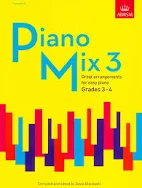 |
ABRSM Piano Mix 3 for Easy Piano Grades 3-4 |
| ABRSM Piano Prep Test |
 |
|
| ABRSM Piano Scales And Arpeggios from 2021 Guide For Practical Grades |
 |
|
| ABRSM Selected Piano Exam 2011 2012 Grade 1 |
 |
|
| ABRSM Selected Piano Exam Grade 2 (2011 2012 ) |
 |
|
| ABRSM Specimen Aural Tests Grade 1 to 3 |
 |
|
| ABRSM Specimen Aural Tests Grade 4 & 5 |
 |
|
| ABRSM Teaching notes on piano exam pieces (2013 & 2014) |
 |
|
| ABRSM The Manual Of Scales Broken Chords And Arpeggios For Piano |
 |
|
| ABRSM Theory of Music Exams Grade 8 (The Associated Board of Royal Schools of Music) 2010 |
 |
|
| AC/DC – Classic – Early Years – High Voltage And Let There Be Rock (Guitar Tab Songbook) |
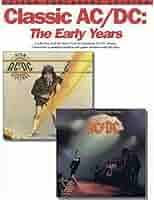 |
ACDC – Classic – Early Years – High Voltage And Let There Be Rock |
| AC/DC – Jam With AC/DC (PDF with MP3 audio tracks Guitar Tab Songbook) |
 |
Jam With ACDC |
| AC/DC Rock Score |
 |
|
| AC/DC, Best of (Guitar & Tablature) |
 |
Best Of ACDC (Guitar) |
| Ace Of Base – Beautiful Life | ||
| Ace Of Base – Dont Turn Around | ||
| Ace Of Base – Living In Danger | ||
| Acoustic 33 TOP Guitar Hits (Guitar Songbook) with Tablature – sheet music |
 |
Acoustic 33 TOP Guitar Hits (Guitar Songbook) – sheet music |
| Acoustic Blues Guitar By Kenny Sultan Guitar Tab |
 |
Acoustic Blues Guitar |
| Acoustic Blues Guitar Keith Wyatt with TABs |
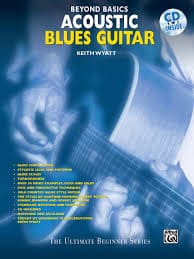 |
Acoustic Blues Guitar Keith Wyatt with TABs |
| Acoustic Blues Guitar Styles (Larry Sandberg) (with Tablature) |
 |
Acoustic Blues Guitar Styles (Larry Sandberg) |
| Acoustic Classics 42 songs Piano Vocal Guitar |
 |
Acoustic Classics 42 songs Piano Vocal Guitar |
| Acoustic Guitar Bible (35 great songs) Guitar with TABs |
 |
Acoustic Guitar Bible (35 great songs) Guitar with TABs |
| Acoustic Rock (Guitar) Rolling Stones, Green Day, Pink Floyd, Bob Dylan (Songbook Guitar Tab) with Tablature |
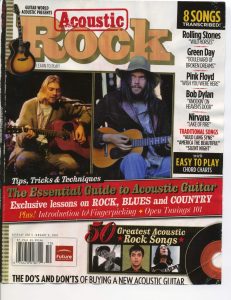 |
|
| Acoustic Rock 90’s, Best of – Guitar with Tablature |
 |
Acoustic Rock 90’s, Best of – Guitar |
| Acqua azzurra acqua chiara (Battisti) | ||
| Ad Te Levavi (Musescore File).mscz | ||
| Adagio (Lara Fabian) | ||
| Adagio MP3.zip | ||
| Adah’s Theme (La femme avec les yeux lumineux) Sex and the City |
 |
|
| Adah’s Theme (Le femme avec les yeux lumineux) Sex and the Cit | ||
| Adam – Adolphe Charles Holy Night Cantique-Nöel |
 |
|
| Adam – Cantique de Nöel Minuit Chretiens | Adam – Cantique de Noel Minuit Chretiens VS | |
| Adam – Derniers souvenirs d’un musicien |
 |
|
| Adam – O Holy Night | Adam O-Holy-Night easy piano 1 of 4 pages | |
| Adam – Souvenirs d’un musicien |
 |
|
| Adam (Cappeau) – Cantique de Noël. Easy Piano with voice or instrument (Paroles and lyrics) |
 |
Adam-Cappeau-Cantique-de-Noel- |
| Adam (Cappeau) – Cantique de Noel. Easy Piano with voice or instrument.mscz | ||
| Adam Cantique de Nöel Christmas song | Adam Cantique de noel | |
| Adam Carse – The History Of Orchestration Adam Carse |
 |
|
| Addams Family Theme (Musescore File).mscz | ||
| Addams Family Theme (Easy Piano) |
 |
|
| Addio Colonnello (Ennio Morricone) | ||
| Adele Songs from the Album 21 For SATB, SSA and Piano |
 |
Adele Songs from the Album 21 |
| Adele – 21 |
 |
ADELE 21 SONGBOOK |
| Adele – Chasing Pavements Piano Vocal guitar chords |
 |
|
| Adele – Easy on me (Piano solo with lyrics) |
 |
|
| Adele – Rolling in the Deep |
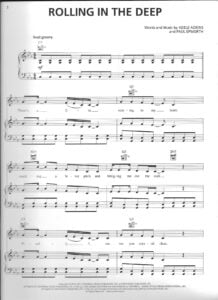 |
|
| Adele – Rumor Has It |
 |
|
| Adele – Set Fire to the Rain |
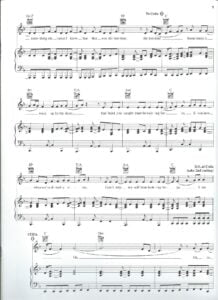 |
|
| Adele – Set Fire To The Rain (2) (Musescore File).mscz | ||
| Adele – Someone Like You | Adele – Someone Like You | |
| Adele – Someone Like You easy piano |
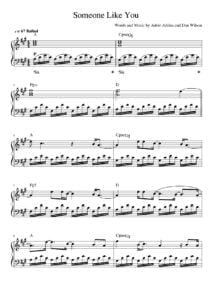 |
|
| Adele – The Best Of SongBook (12 songs arranged for easy piano) |
 |
Adele – The Best Of SongBook (12 songs arranged for easy piano) |
| Adele 19 [Piano, Guitar, Vocals] |
 |
Adele 19 [Piano, Guitar, Vocals] |
| Adele 25 Songbook |
 |
Adele 25 Songbook Contents — 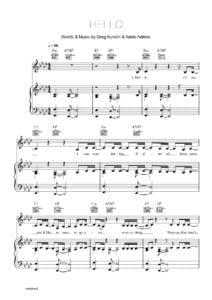 |
| Adele Best Of Adele Big Note Piano (Adele Adkins) |
 |
Adele Best Of Adele Big Note Piano (Adele Adkins) |
| Adele Easy On Me Sheet Music |
 |
|
| Adele Original Keys For Singers (Adele) |
 |
Adele Original Keys For Singers (Adele) |
| Adele Skyfall (Piano Vocal Guitar Chords) | Adele Skyfall (Piano Vocal Guitar Chords) | |
| Adios Amor – Goodbye My Love as recorded by José Feliciano |
 |
|
| Adult All In One Course Level 1 With Audio Mp3 (Willard Palmer) |
 |
Lessons Alfred’s Basic Adult Piano Course Level 1 |
| Adult All In One Course Level 2 With Audio Mp3 (Willard Palmer) |
 |
Willard Palmer – Adult All-In-One Course Level 2 |
| Adult Greatest Movie Hits Piano Level 1 |
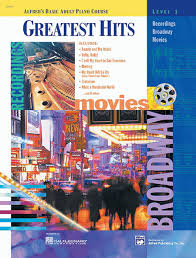 |
Adult Greatest Movie Hits Piano Level 1 |
| Adult Piano Adventures ALL-IN-ONE PIANO COURSE 1 |
 |
|
| Adult Piano Adventures All-In-One Piano Course Book 2 Book With Media Online (Nancy Faber, Randall Faber) Sheet Music |
 |
|
| Adult Piano Adventures Christmas – Book 1 (Nancy Faber Randall Faber) |
 |
|
| Adult Piano Adventures Christmas – Book 2 |
 |
Adult Piano Adventures Christmas – Book 2 |
| Adult Piano Adventures Popular Book 1 – Timeless Hits and Popular Favorites (Adult Piano Adventures Popular) |
 |
Adult Piano Adventures Popular Book 1 – Timeless Hits and Popular Favorites (Adult Piano Adventures Popular) |
| Adult Piano Course Greatest Movie Hits Piano Level 1 Recordings Broadway Movies |
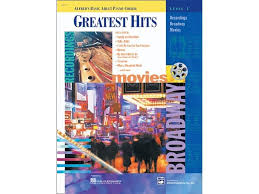 |
Adult Piano Course Greatest Movie Hits Piano Level 1 Recordings Broadway Movies |
| Advanced Harmonic Concepts by Wayne Naus (with audio MP3) |
 |
Advanced Harmonic Concepts by Wayne Naus |
| Advanced Harmonic Exercises For Jazz Piano |
 |
advanced harmonic exercises |
| Advanced Piano Solos 1 Encyclopedia by Tom Roed |
 |
Advanced Piano Solos 1 Encyclopedia by Tom Roed |
| Advanced Piano Solos 2 Complete by Tom Roed |
 |
Advanced Piano Solos 2 Complete by Tom Roed |
| Advanced Sacred Music Piano Solos by John Kraus |
 |
|
| Advanced Scale Concepts and Licks for Guitar (PDF + MP3 audio tracks Play Along) with Tablature |
 |
 |
| Aebersold – 110 – When I fall In Love – Romantic Ballads pdf with embedded audio MP3 Tracks |
 |
Jazz Play Along Vol 110 [When i Fall in Love] |
| Aebersold – 113 Embraceable You – Vocal Standards with audio MP3 Tracks |
 |
Jamey Aebersold – Vol 113 |
| Aebersold – 30 blues scale By Jamey Aebersold | Aebersold – 30 blues scale By Jamey Aebersold | |
| Aebersold – A New Approach To Jazz Improvisation Gettin’it together vol. 21 |
 |
aebersold gettin all together vol 21 |
| Aebersold – Practice Procedures For Memorizing Scales And Chords | Aebersold – Practice Procedures For Memorizing Scales And Chords | |
| Aebersold – Rapid Reference Vol 1-114 | Aebersold – Rapid Reference Vol 1-114 | |
| Aebersold – Vol 01 – How to Play and Improvise Jazz (with audio MP3) |
 |
Aebersold – Vol 01 – How to Play and Improvise Jazz |
| Aebersold – Vol 03 – The II-V7-I Progression Jazz Play Along Book + Audio Mp3 |
 |
|
| Aebersold – Vol 105 – Dave Brubeck Jazz Play Along Book + Audio Mp3 |
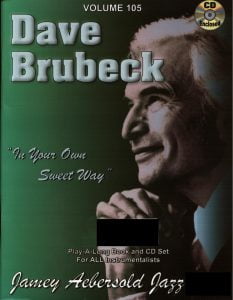 |
|
| Aebersold – Vol 118 – [Groovin Jazz] (with audio MP3) |
 |
|
| Aebersold – Vol 32 – Ballads Jazz Play Along Book + Audio Mp3 |
 |
|
| Aebersold – Vol 34 – Jam Session Jazz Play Along Book + Audio Mp3 |
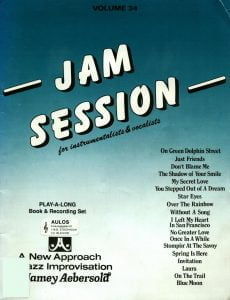 |
Includes MP3 Play along themes as Blue moon, The shadow of your smile, Over the rainbow, etc. |
| Aebersold – Vol 45 – [Bill Evans] Jazz Play Along Book + Audio Mp3 |
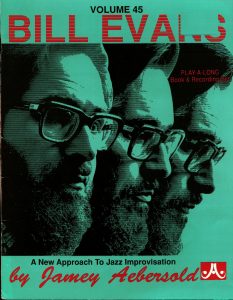 |
Aebersold – Vol 45 – [Bill Evans] |
| Aebersold – Vol 58 – Unforgettable Standards Jazz Play Along Book + Audio Mp3 |
 |
aebersold unforgettable standards sheet music |
| Aebersold – Vol 76 – David Baker – How To Learn Tunes (A Jazz Musician’s Survival Guide) |
 |
how to learn tunes |
| Aebersold 25 How To Practice By Jamey Aebersold | Aebersold 25 | |
| Aebersold Antonio Carlos Jobim Vol 98 – Bossa Nova Songbook Jazz Play Along Book + Audio Mp3 |
 |
Aebersold Antonio Carlos Jobim Vol 98 – Bossa Nova Songbook |
| Aebersold Anyone Can Improvise – 52 Points To Remember | Aebersold Anyone Can Improvise – 52 Points To Remember | |
| Aebersold Jazz EAR training (with audio MP3) |
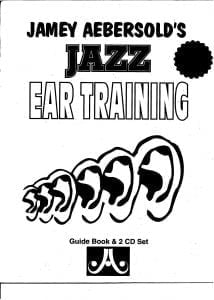 |
Aebersold Jazz EAR train |
| Aebersold Jazz Handbook 09 Tips For Learning A New Tune & Practice Procedures For Memorizing |
 |
Aebersold Jazz HANDBOOK |
| Aebersold Jazz Play-Along Books & audio MP3 1st Part Full Collection – Vol 1- 40 (with MP3) for all instruments |
Compressed file 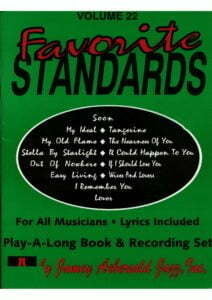 Aebersold Full Collection Part 1 – Vol 1- 40 Aebersold Full Collection Part 1 – Vol 1- 40 |
40 volumes with MP3 Aebersold Book Index Vol.001-106 |
| Aebersold Jazz Play-Along Books & audio MP3 2nd Part Full collection Vol 41- 75 for all instruments | Compressed fileAebersold Full Collection Part 2 – Vol 41- 75.. | 35 volumes with MP3 Aebersold Book Index Vol.001-106 |
| Aebersold Jazz Play-Along Books & audio MP3 3rd Part Full Collection – Vol 76- 112 (with MP3) | Compressed fileAebersold Full Collection Part 3 – Vol 76- 112 | 37 volumes with MP3 Aebersold Book Index Vol.001-106 |
